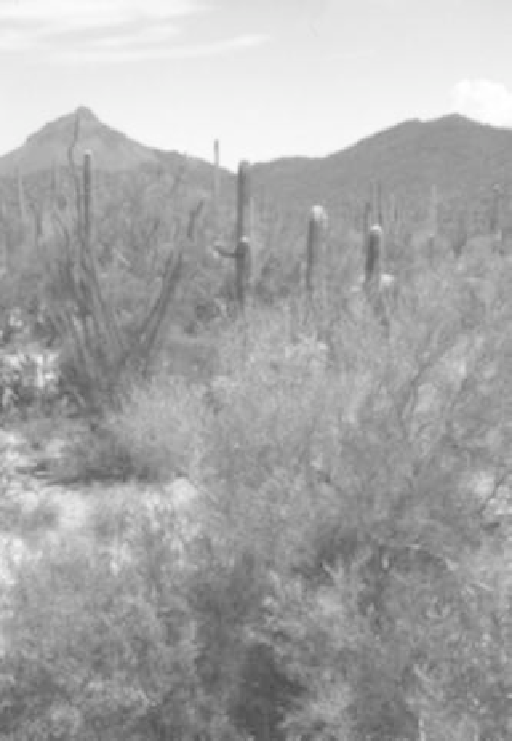Environmental Engineering Reference
In-Depth Information
FIGURE 7.1
Arboreal character of the Upper Sonoran Desert is illustrated in this photo with saguaro (
C. gigantea
) and ocoti-
llo (
F. splendens
) in the background and littleleaf palo verde (
Parkinsonia microphyllum
) in the foreground.
the ability to lose leaves and/or stems to reduce water needs during drought), the abil-
ity to function at very low water potentials, and the ability to quickly take up available
water using an extensive, shallow, fibrous root system that may extend 4 m from the plant.
Individual creosote bush plants are long lived (estimates are 100-200 years) and because
the plants are clonal, rings of genetically identical creosote bush plants have been esti-
mated to be much older.
The Arizona Upland includes such species as mesquite (
Prosopis
spp.), jojoba (
Simmondsia
chinensis
), ocotillo (
Fouquieria splendens
), and bear grass (
Nolina microcarpa
). Yuccas (
Yucc a
spp.) occur as the Arizona Upland transitions into more mesic chaparral and grassland
communities (Figure 7.4). Nitrogen-fixing, leguminous trees and shrubs (family Fabaceae)
are especially common and reflect the tropical origin of many common Sonoran Desert
species. Perennial grasses also become more important in the flora in these regions as well.
The Arizona Upland is also noted for its rich cactus flora from several genera including the
prickly pears (
Opuntia
spp.), the cholla (
Cylindropuntia
spp.) (Figure 7.5), and the barrel cacti
(
Ferocactus
and
Echinocactus
spp.).


Search WWH ::

Custom Search